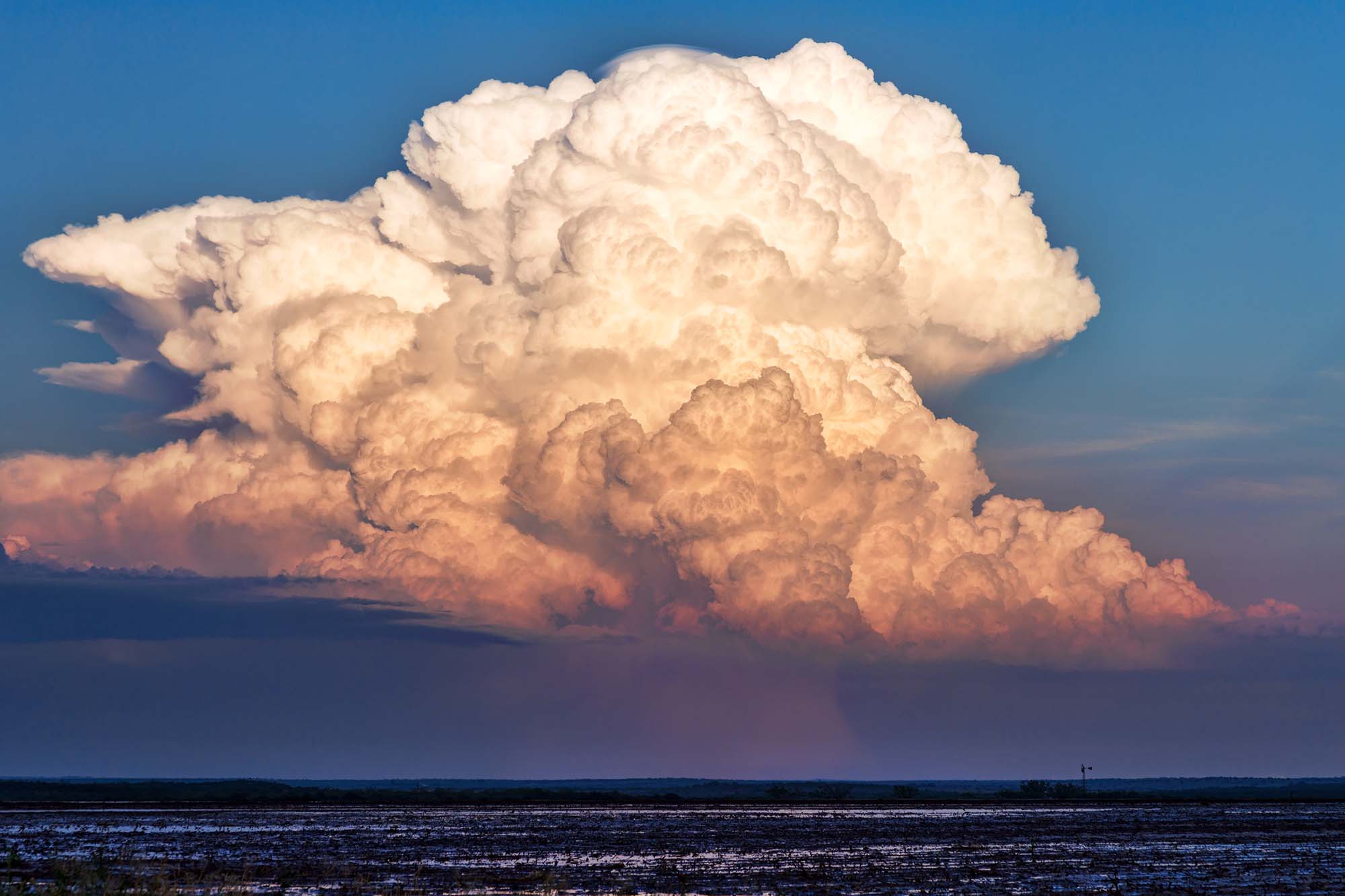When most people think of thunderstorms, they imagine a large, dark storm cloud that pops up in the afternoon and evening, bringing strong winds and heavy rain. This type of storm is called an air mass thunderstorm. However, two other types of thunderstorms often precede frontal passages in the summer, which meteorologists call isolated and scattered thunderstorms.
So what’s the difference? That’s what we hope to answer for you here.
What is an air mass thunderstorm?
Air mass thunderstorms are a type of thunderstorm usually associated with warm, moist air. These storms can occur anytime, but they are most common in the spring and summer months, especially in warmer tropical climates. They develop due to daytime heating and aren’t necessarily the result of any particular weather feature, such as a front or storm system. Florida’s daily summer thunderstorm activity is an excellent example of an air mass thunderstorm.
Air mass thunderstorms can vary significantly in size and intensity but typically last for only a few hours and are relatively weak. The most significant threats are heavy rains, as they usually move little, if at all.

What does the term “scattered thunderstorms” mean?
Scattered thunderstorms refer to a weather pattern where thunderstorms occur over a wide area but are not close to each other. They are common in the spring and summer and cover no more than half of the area they’re forecasted for.
While scattered showers and thunderstorms can produce heavy rainfall and strong winds, they are generally not as severe as storms forming clusters or lines. Nevertheless, they can still pose a danger to those caught outdoors, so it is always important to be aware of the forecast before venturing out.
How long do scattered thunderstorms last?
These thunderstorms rarely last more than a few minutes, and if other storms are in the area, there may be a break, and sunshine might even peek back out of the clouds.
What does the term “isolated thunderstorms” mean?
Most thunderstorms occur as part of a broader storm system, such as a cold or warm front. However, some thunderstorms can develop in isolation from other weather systems or are embedded within heavy showers. The official definition says that no more than an eighth of the forecast area is affected.
These isolated thunderstorms are often short-lived and relatively weak, but they can still produce heavy rain, strong winds, and hail. Isolated thunderstorms typically develop in areas of high instability, such as during the summer months.
What is the difference between isolated and scattered thunderstorms in a weather forecast?
Thunderstorms are a common summer weather phenomenon. Most thunderstorms are classified as either isolated or scattered. Isolated thunderstorms occur alone, while scattered thunderstorms occur in groups. The main difference between the two is the amount of coverage they provide.
Isolated thunderstorms tend to be small and localized, while scattered thunderstorms can cover large areas. However, both types of storms can produce heavy rains, strong winds, and even hail. When thunderstorms are in the forecast, it is always best to avoid caution and seek shelter until the storm has passed.

Should I prepare differently if scattered or isolated thunderstorms are in the forecast?
No! Thunderstorms can occur at any time of year, ranging from mild to severe. If you’re caught in a thunderstorm and hear thunder, that means lightning is nearby. Immediately seek shelter if possible. The best place to take cover is indoors, but if that’s not an option, look for something that will protect you from the elements, such as a car or a large tree.
If you know there’s a chance of bad weather, make sure to have a plan in place and keep an eye on the forecast. Avoid open spaces and high ground, as these are more likely to be struck by lightning. Once you’ve found shelter, stay put until the storm has passed. Planning can also help you stay safe during a thunderstorm.


